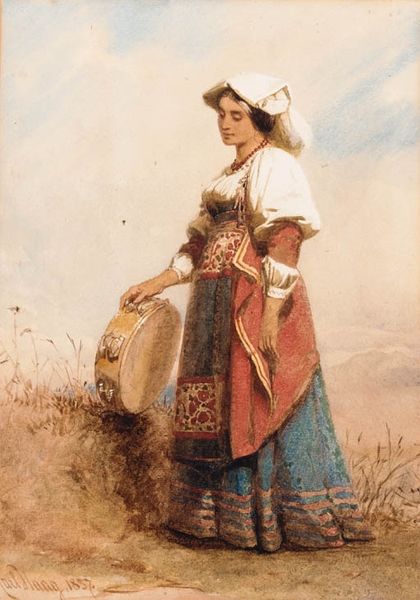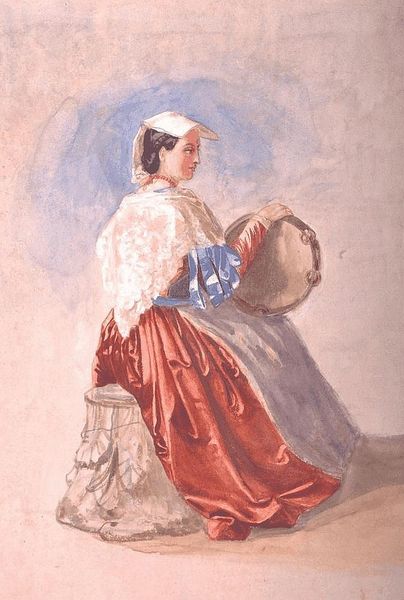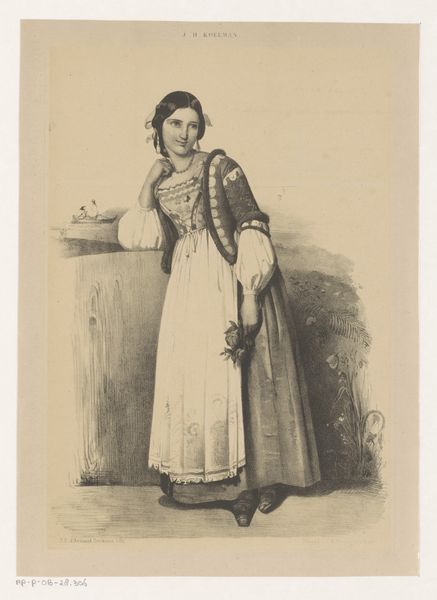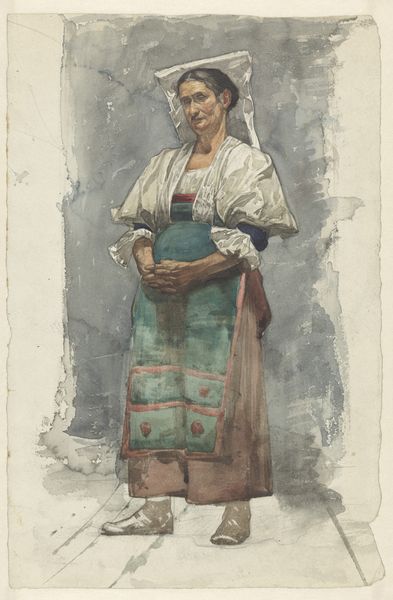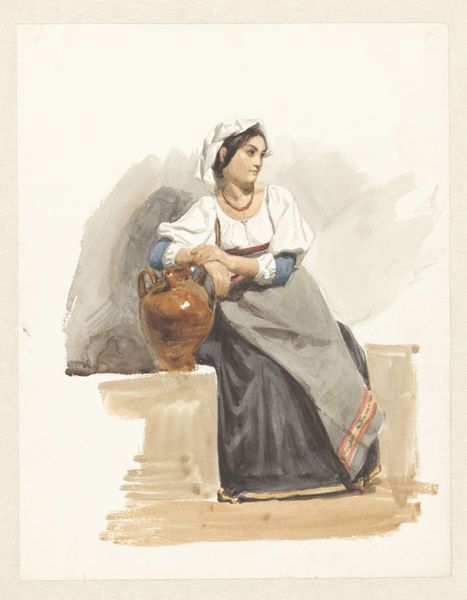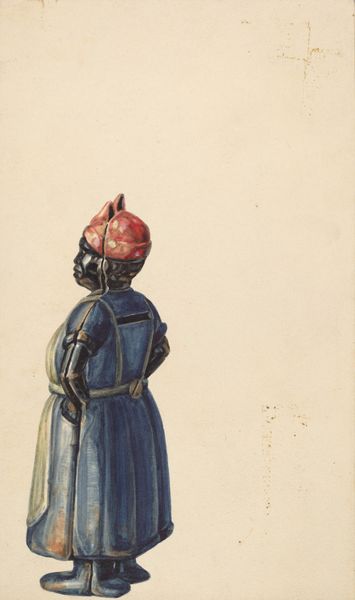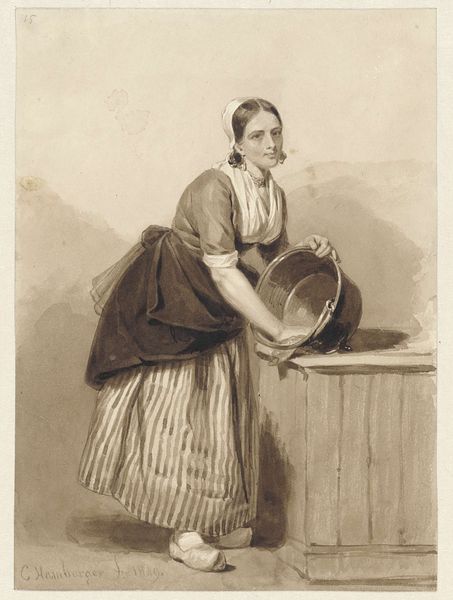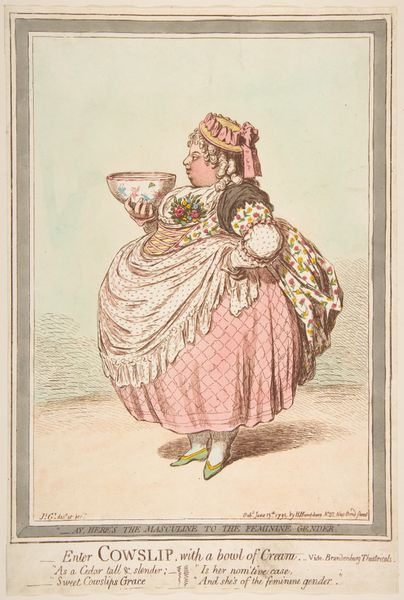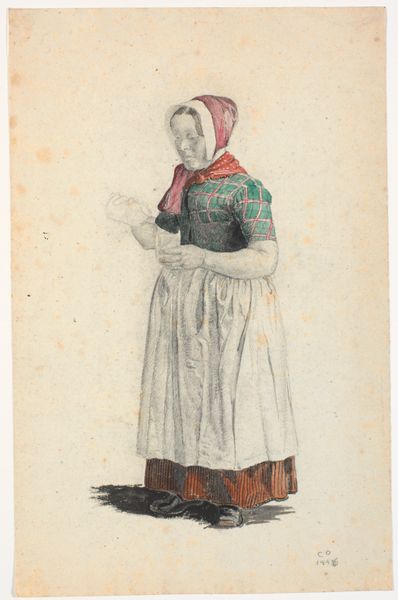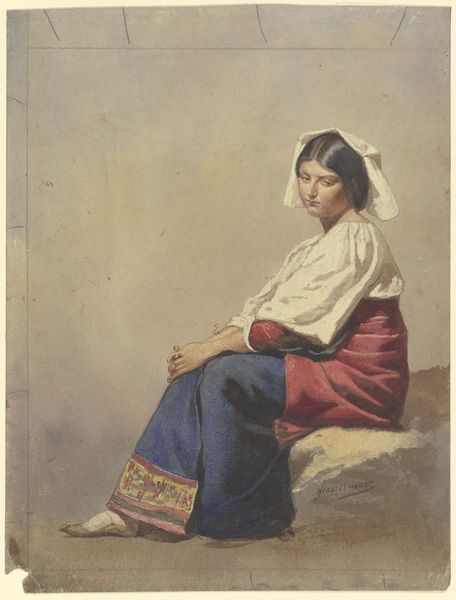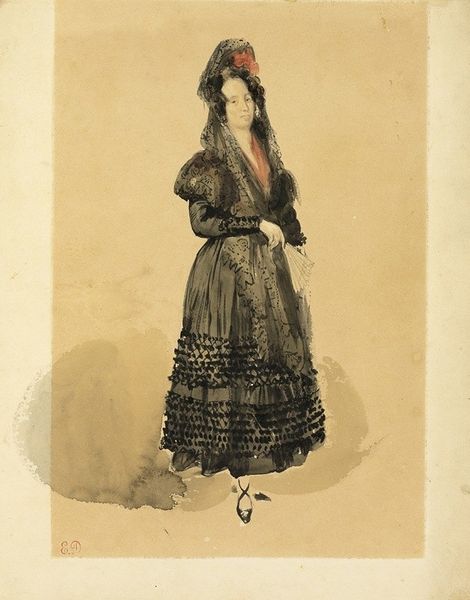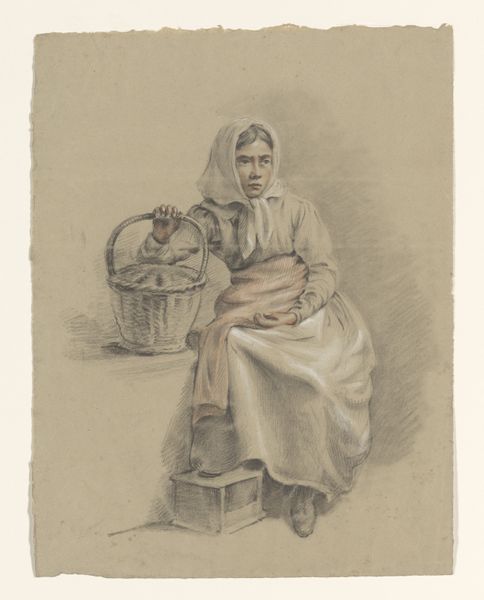
Dimensions: 50 x 34.8 cm
Copyright: Public domain
Curator: Here we have Carl Haag's "Woman of Albano (the tambourine player)," created in 1853 using watercolor and charcoal. It’s quite characteristic of his detailed genre paintings executed en plein-air. Editor: My first impression is one of stillness, even melancholy. The muted color palette and her downward gaze suggest a moment of quiet contemplation rather than lively performance. There is some undeniable orientalism to the representation, a gaze fixed upon her. Curator: Exactly. Haag was part of a larger artistic movement fascinated with romanticized visions of other cultures, and he traveled extensively, capturing scenes he encountered. Albano is a town near Rome. In this instance, consider the ethnographic tradition and its influence on art depicting ordinary life, often focusing on regional types and costumes. It played into Victorian England’s obsession with categorizing the world. Editor: It's that very "categorizing" that gives me pause. Is this an authentic depiction of a woman from Albano, or is she serving as a vehicle for colonial fantasy, a decorative object? The tambourine feels like a prop to exoticize her. The question becomes, who is this work really *for*? Curator: Indeed, the performative aspect of cultural representation is critical to consider. But look closely. Haag captures texture beautifully – the crisp lace of her veil, the roughness of the stone she leans on. He elevates a simple scene to something worthy of artistic attention, which was valuable in shaping public perceptions of other cultures at the time. Editor: But wasn't it also shaping it in ways that served imperial agendas? These depictions, however detailed, fed into a narrative of "otherness" that justified exploitation. The woman is beautiful, yes, but does Haag give her agency, or simply frame her as a picturesque element of the Italian landscape? Curator: I concede that such representations were easily co-opted to serve problematic purposes, but an approach in romanticism involved sincere engagement with the foreign, exotic themes of genre-painting. What strikes me is that the figure blends so seamlessly into the composition. She does seem like a simple element of the broader environment in Haag’s imagination. Editor: Perhaps. For me, I think, it reminds us to critically examine whose stories are being told and how, especially when those stories involve people who have historically been marginalized. Curator: That is a valuable and salient point, it certainly is. Looking closer, this watercolour reveals interesting questions and is testament to how complex a simple image can become over time. Editor: Absolutely. There’s more to it than initially meets the eye. It is worth questioning how we position ourselves when encountering such complex imagery today.
Comments
No comments
Be the first to comment and join the conversation on the ultimate creative platform.
